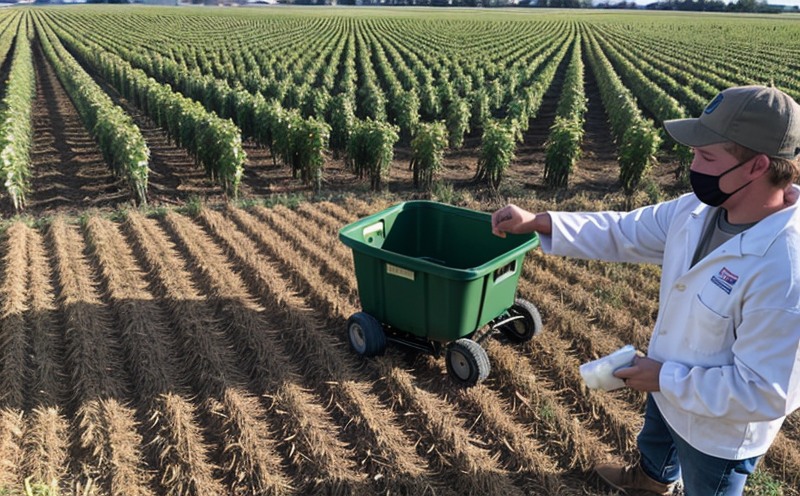Bruising Susceptibility Testing in Fruits
The bruise susceptibility testing of fruits is a critical process within agricultural and forestry testing. Bruises can significantly impact the shelf life, marketability, and overall quality of produce, especially for fruits that are highly sensitive to mechanical damage during handling or storage.
Understanding the bruising susceptibility in fruits involves assessing how susceptible they are to physical damage under specific conditions such as pressure, temperature, and humidity. This testing is particularly important for fruits like apples, pears, peaches, and other delicate produce that can develop visible bruises even after minimal handling or storage.
The process begins with selecting representative samples from the batch of fruit being tested. These samples are then subjected to controlled mechanical stress using specialized equipment designed to simulate real-world handling conditions. The testing apparatus applies a gradual increase in pressure, monitoring the point at which visible bruising occurs on the fruit's surface.
The acceptance criteria for this test are based on international standards such as ISO 17253-4:2018, which specifies methods for determining mechanical resistance to impact and compression of fruits. The testing apparatus records both the applied pressure and the area affected by bruising, providing precise data that can be used in quality assurance and product development.
Post-harvest quality testing is essential in ensuring that fruit meets market standards and maintains its integrity during transportation and storage. By identifying the bruise susceptibility of a particular variety or batch, producers and processors can implement strategies to enhance handling practices and packaging designs, leading to improved shelf life and reduced waste.
This information is also valuable for R&D engineers working on new varieties of fruits that may have enhanced resistance to mechanical damage. By understanding the bruise susceptibility early in the development process, they can make informed decisions about breeding programs and post-harvest handling protocols.
- Customer Impact: Enhanced quality control leading to reduced waste and improved product consistency.
- Satisfaction: Increased customer satisfaction due to longer shelf life and better-tasting fruits reaching the market.
- Market Advantage: Competitive edge in the marketplace by ensuring high-quality products.
Why It Matters
Bruising susceptibility testing is crucial for maintaining the quality of fruits throughout their supply chain. Bruises not only affect the appearance but also impact the taste and texture, which are key factors in consumer acceptance. By identifying the bruise susceptibility early on, producers can optimize storage conditions, handling practices, and packaging to minimize damage.
The testing process helps in understanding how different varieties of fruits respond to mechanical stress. This knowledge is vital for both large-scale agricultural operations and smaller farms that are looking to enhance their post-harvest management techniques. For quality managers, this data provides a clear path forward in improving product consistency and meeting market demands.
Moreover, understanding the bruising susceptibility of fruits allows for better decision-making regarding storage temperature and humidity levels. These parameters can be adjusted based on the specific needs of each fruit type to extend its shelf life effectively without causing additional damage.
The benefits extend beyond just improving product quality; it also plays a significant role in reducing food waste. By minimizing bruising, fruits remain marketable for longer periods, which translates into higher profitability for producers and processors.
Benefits
The primary benefit of conducting bruise susceptibility testing lies in its ability to enhance the overall quality of fruits reaching consumers. This testing helps in identifying weak points in fruit handling practices, allowing for adjustments that lead to better product consistency and longer shelf life.
For compliance officers, this service ensures adherence to international standards like ISO 17253-4:2018 without the need for additional paperwork or certification processes. The data generated from these tests can be used internally to improve operational efficiency and external reporting.
R&D engineers benefit greatly from bruise susceptibility testing as it provides them with critical insights into optimizing fruit varieties for enhanced resistance against mechanical damage. This information is essential in developing new breeds that are more resilient during post-harvest handling processes.
For procurement teams, this service ensures the supply chain integrity by ensuring that only high-quality fruits enter the processing stages. It also helps in negotiating better terms with suppliers who can demonstrate superior quality control practices through such testing results.





